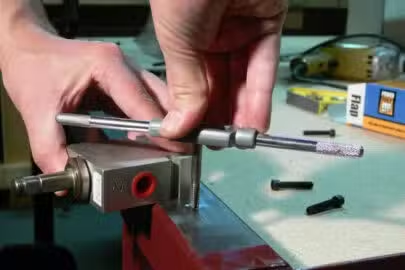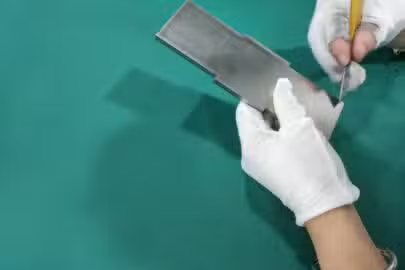In CNC turning, where precision meets productivity, the choice between live tooling and secondary operations becomes vital. It’s like picking the right tool for a job; each has its strengths and quirks, and finding the perfect match depends on the unique needs of your production floor.
Live tooling is a state-of-the-art development in CNC turning, which neatly incorporates milling capabilities into the turning process. Live tooling allows the execution of several operations at once without realigning components. On the other hand, secondary operations entail finishing more machining stages following the first turning process. This method’s adaptability lets producers meet various production requirements without significantly adjusting the central turning arrangement.
The secret to coordinating accuracy and output on the shop floor is to weigh the benefits and downsides of live tooling and secondary operations. In this article, you will learn the intricate details of these methods, guiding you through the careful balancing act between the simplicity of secondary operations and the instantaneous flair of live tooling.
Understanding CNC Turning
Although CNC turning procedures may appear complex, the first step is to convert your CAD files into a program that the CNC machine can comprehend. Then, you need to prepare the machine to begin turning. A workpiece is rotated and spun during turning as a cutting tool methodically removes material from its outside. The machined material usually assumes a round or cylindrical shape, but it is also possible to turn materials of different shapes using an appropriate adapter.
The workpiece spins inside the machine while the cutting tool makes precise cuts until it takes on the desired, preprogrammed shape. Interestingly, CNC lathes and turning centers include turrets with various computer-controlled tools via codes and programming. It’s important to note that machines with a larger tool capacity are more sophisticated, offering more outstanding capabilities, and are more appropriate for working with complex designs. The effectiveness and adaptability of CNC turning operations are significantly shaped by two well-known strategies: live tooling and secondary operations.
What is the Live Tooling?
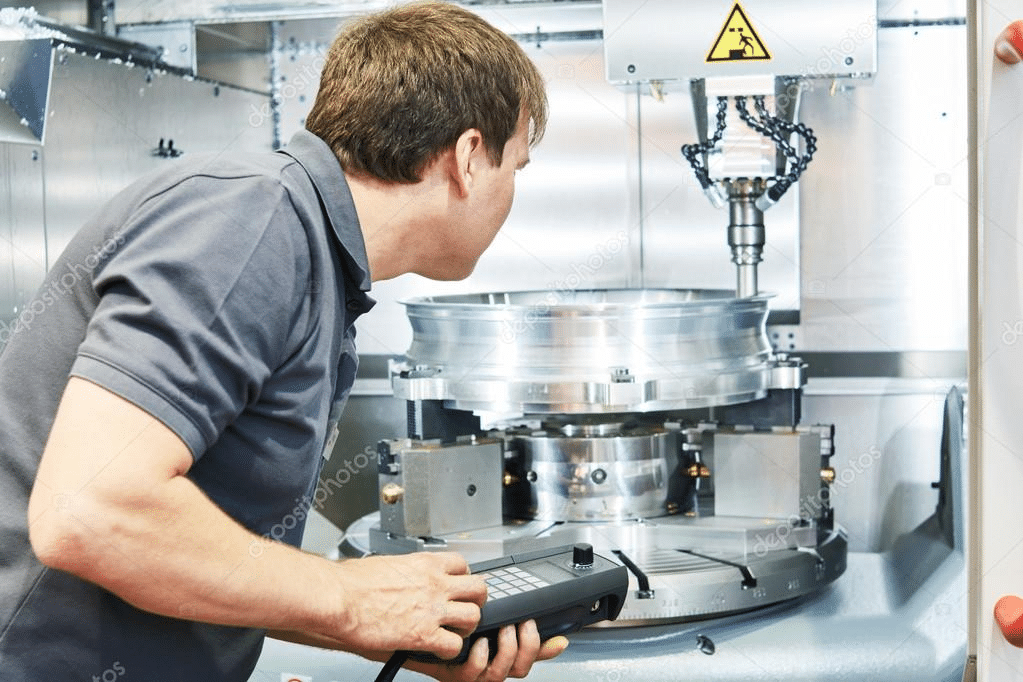
Live tooling refers to the machining or cutting tool mounted on a CNC lathe’s turret. A CNC lathe with driven tooling has a “live” cutting mechanism that functions independently of the rotating workpiece, unlike traditional turning machines that employ a static tool and only the workpiece rotates. As a result, metalworking activities become more intricate, precise, and efficient. Furthermore, machining tasks can be completed faster, increasing production all around.
Live tooling provides custom CNC machining services with several unique benefits. CNC workstations with live tooling offer more design flexibility for precision-machined parts, components, and assemblies than standard fixed tooling.
The capacity of live tools to rotate and execute several metal-cutting operations makes it possible to carry out increasingly intricate machining operations in a single run. This increased adaptability streamlines the setup process and lowers manufacturing labor costs and lead times. A critical factor in preserving precision and repeatability among machined products is the removal of pointless setup procedures.
Advantages of Live Tooling
Live tooling lathes offer compelling benefits, though typically involve longer setup times and more intricate programming and machinery. The advantages provided by live tooling outweigh the additional effort invested.
- Faster Fabrication: The live tooling lathe is one of the first innovations in expediting fabrication. CNC machining rates are significantly increased by using sophisticated gears and bearings. As a result, production time is reduced considerably, guaranteeing that parts are manufactured more quickly and efficiently to meet the needs of contemporary manufacturing.
- Datum Preservation: The exceptional capability of live tooling lathes to maintain the datum during machining is one of their most notable features. Historically, there has been a chance of data loss during the transfer of material items between machines, which could result in errors. This worry is lessened with live tooling lathes since the datum is maintained, which offers a substantial time-saving advantage and improves the manufacturing workflow’s general efficiency.
- More Accurate Machining: Live tooling lathes are essential for improving the precision of machining processes and their time-saving benefits. These lathes successfully reduce the complexity of tool changes by reducing the number of lathe tools utilized during manufacturing. This decrease guarantees accuracy in each component while minimizing human error and maintaining a high-quality standard in machined goods.
- Multipurpose Capability: Various operations can be performed with a single setup thanks to the multipurpose capabilities of live tooling lathes. These lathes are more versatile since they may also be used for milling, drilling, and other metal-cutting tasks besides turning. Their ability to serve several purposes simplifies the production process and broadens the range of potential uses, making them perfect for intricate and diverse machining needs.
- Greater Design Flexibility: Precision-machined parts, components, and assemblies might have more design flexibility thanks to live tooling lathes. By enabling many operations to be completed in one run, more complex and complicated geometries can be created, expanding the possibilities of CNC machining. This increased flexibility in design creates new opportunities for developing intricate and creative components.
Disadvantages of Live Tooling in CNC Machining
Although live tooling in CNC machining has many benefits, a comprehensive understanding necessitates considering potential drawbacks. Costlier equipment and greater complexity are two significant disadvantages.
- Increasing Difficulty: The live tooling integration with CNC machining introduces a higher degree of system complexity. This intricacy results from the requirement to synchronize cutting and rotating actions smoothly. Operators and machinists could need specific training to efficiently develop and run live tooling systems, raising labor costs. Furthermore, the complexity of these systems can necessitate more complex maintenance, which could cause downtime if not carefully handled. The manufacturing process becomes even more complex due to the learning curve involved in grasping the nuances of live tooling.
- Increased Equipment Costs: A substantial initial cost is associated with implementing live tooling for technology and equipment. Equipment costs are increased by adding rotary tooling, tool holders, and other parts required for live tooling functionality. Manufacturers must carefully consider if the improved capabilities of live tooling match their production needs and if the higher cost is justified. When live tooling’s versatility isn’t fully utilized, the higher equipment costs can offset the advantages, making it a less cost-effective option in some situations.
- Expertise and Specialized Maintenance: Live tooling systems frequently need specialist maintenance knowledge. The complex parts, such as rotating mechanisms and live tool holders, must be inspected and adjusted regularly to guarantee optimal operation. Routine maintenance processes become more complex due to the requirement for specific knowledge in maintaining and troubleshooting live tooling equipment. Maintenance staff may need continuous training due to this specialty, which could result in extra expenses.
What is Secondary Operations?
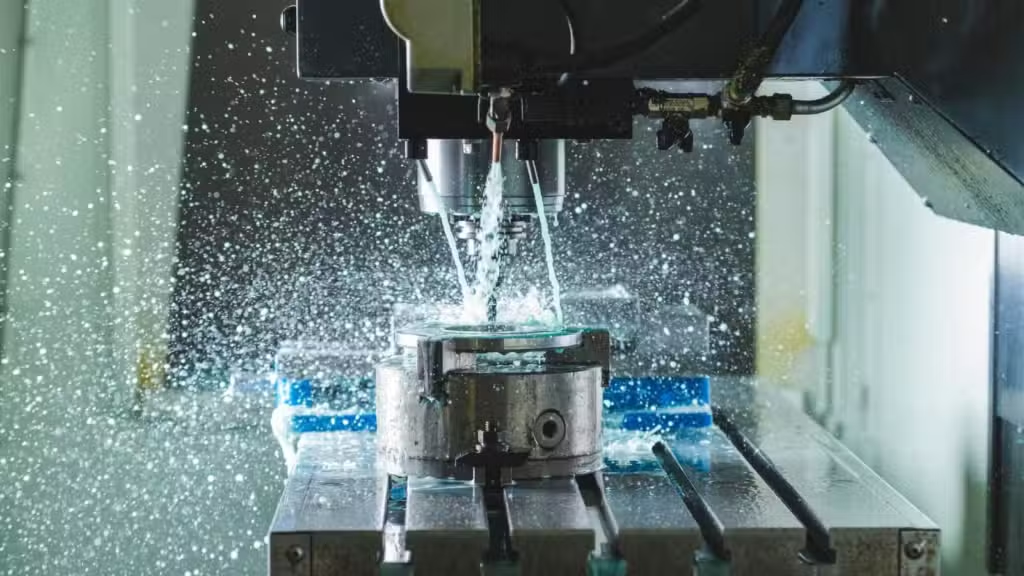
Secondary operations are extra procedures or methods applied to manufactured products to improve their aesthetics or ensure they fit specific tolerances. The main emphasis of a CNC machining unit is the first creation or manufacture of a part or component from materials like sheet metal or plastic, making sure it complies with the necessary size and specifications. This main operation uses a variety of machining processes, such as milling, turning, shaping, and tapping.
But the adventure doesn’t stop there. After the primary process, finishing touches are required to improve the part or product. Fine-tuning methods such as polishing, coating, surface finishing, and so on are included in secondary processes. These procedures are essential to achieving the intended functional and aesthetic features. In addition, secondary operations include testing and inspecting finished products to ensure circuit boards or other products perform as intended and fulfill specifications. In essence, it’s the additional work and focus to turn a machined part into a final, superior product.
Advantages of Secondary Operations
Secondary activities are essential to the manufacturing process and provide several benefits for humans that go well beyond the initial fabrication phase. These activities enhance the end product and offer a complete set of advantages, which include:
- Improving Aesthetics: Consider a product that looks good and fulfills utilitarian needs. Refinement is added by secondary procedures using coating, polishing, and surface finishing methods. By paying close attention to aesthetics, the final product will undoubtedly have improved aesthetic aspects and functionality.
- Fine-tuning for Precision: Secondary operations are the artisans in attaining precision, which is crucial in production. These activities fine-tune items to match specified tolerances through painstaking techniques. The outcome is a smooth alignment of every part with the necessary measurements, guaranteeing an accuracy level that satisfies or surpasses requirements.
- Versatile Material Application: Secondary processes offer a universal approach, and manufacturers frequently work with various materials. These methods can be applied to other materials, including plastic and sheet metal, increasing the range of possible uses and guaranteeing the production process’s continued adaptability.
- Functional Excellence: Secondary processes have a role in the functional optimization of parts beyond aesthetic appeal. For example, coating procedures can improve overall performance, corrosion resistance, and longevity. This goes beyond merely completing requirements; it’s about ensuring the finished product performs admirably in its intended roles.
- Strict Quality Assurance: Secondary activities are distinguished by their dedication to quality. Testing and inspection are essential elements that painstakingly find and address any possible flaws or problems. By ensuring that the finished product not only meets but beyond the highest standards, this dedication to quality assurance fosters confidence in its dependability.
Downside of Secondary Operations
Even though secondary operations in manufacturing provide many benefits, it’s essential to be aware of any potential drawbacks and difficulties that may arise. Here are the disadvantages of secondary operations:
- Increased Production Costs and Time: One significant drawback of secondary operations is the additional time and expense they contribute to the manufacturing process. These processes, which frequently include difficult phases like coating and polishing, can cause the production schedule to run longer than expected. The requirement for specialized machinery and trained people also raises production costs, which affects the manufacturing workflow’s overall economic efficiency.
- Complexity in Coordination: Managing and coordinating the extra processes might get complicated as secondary operations get more complex. Efficient communication and coordination are necessary to guarantee the smooth integration of primary and secondary functions. In this intricate ballet of processes, any hiccups or errors could result in delays and even inefficiencies in the manufacturing chain.
- Potential for Quality Variations: Adding secondary activities adds another level of complexity, which raises the possibility of different product quality outcomes. If a stage in the process is not carried out precisely, there is an increased chance of mistakes or inconsistencies. Maintaining a consistently high level of quality throughout all steps becomes vital yet challenging.
Live Tooling vs. Secondary Operations
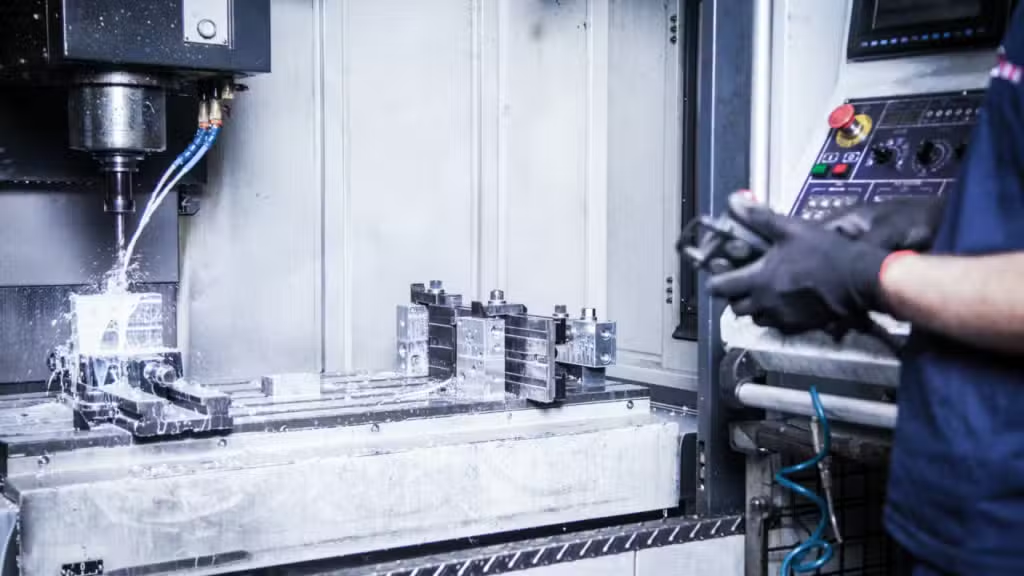
When deciding between live tooling vs. secondary operations in CNC machining, performance, cost-effectiveness, and project-specific needs must all be carefully considered. To assist you in making an informed decision for your manufacturing operations, let’s dissect these critical factors.
Comparing Performance
Dynamics of Live Tooling
Adding a dynamic aspect allows live tooling to perform many operations in a single setup for CNC machining. Live tooling shines in adaptability as it may also be used for milling, drilling, and other activities besides turning. This multitasking maestro-like ability streamlines procedures and may even shorten cycle times on the manufacturing floor.
Precision in Secondary Operations
Conversely, secondary operations improve and refine items following the primary machining stage. Precision and visual appeal are enhanced by surface finishing, coating, and polishing techniques. Secondary operations provide careful fine-tuning, guaranteeing the intended quality and appearance of the finished product, even if they could require extra stages.
Analyzing costs effectively
Efficiency of Live Tooling
The effectiveness of live tooling resides in its capacity to combine several processes into one, which may shorten setup times and production schedules altogether. The initial investment may be costlier because live tooling machinery is more sophisticated. Still, over time, the increased efficiency can help make the investment more cost-effective, particularly for high-volume production.
Adaptability of Secondary Operations
Secondary processes can be more flexible with a broader range of materials and part geometries, even though they could require extra stages. This is a cost-effective option because it allows for more customization. But it’s important to consider that some secondary processes are labor- and time-intensive, which could affect the cost of production as a whole.
Here is a table summarising the differences between live tooling vs secondary operations.
| Aspect | Live Tooling | Secondary Operations |
| Definition | Involves multitasking capabilities, allowing additional operations (e.g., milling, drilling) during the workpiece rotation. | Comprises post-machining processes like polishing, coating, or surface finishing to refine the final product. |
| Execution | is simultaneous with primary machining, reducing setup times and improving efficiency. | This follows direct machining, which occurs after the initial fabrication process. |
| Versatility | Ideal for high-volume production with simpler geometries, emphasizing efficiency. | It is excellent for customization, precision, and intricate finishes, making it suitable for unique design considerations. |
| Complexity | Suited suits projects with straightforward geometries and a focus on speed and efficiency. | Ideal for tasks requiring intricate customization, specialized finishes, or precise aesthetic enhancements. |
| Cost Consideration: | This may involve higher initial investment but can lead to long-term gains in efficiency, especially for high-volume production | Labor and time-intensive processes may incur additional costs, particularly for customization and meticulous finishes. |
Selecting the Appropriate Approach for Your Project
Think About the Complexity of the Project
Live tooling may be the best option for applications requiring substantial production volumes and simple geometries. Its multitasking abilities fit very nicely with tasks that call for quickness and efficiency.
Customizing to Meet Particular Needs
Secondary operations are a great advantage if your project demands precision finishing, complex customization, or specialty coatings. The capacity to customize each stage to meet particular needs can be a differentiator, particularly for tasks involving complex design considerations.
Examine the budget and schedule
Your decision on live tooling vs. secondary operations should consider your project deadlines and financial limits. Consider each approach’s setup and implementation times, initial outlay, and continuing operating expenses.
Balancing Cost and Performance
The choice ultimately comes down to striking the correct balance between expense and performance. While secondary operations excel in precision and customization, live tooling may shine in efficiency. You can choose the approach that best fits your objectives by being aware of the subtleties of the requirements for your project.
Conclusion
The choice between live tooling and secondary operations in CNC turning is a complex investigation of effectiveness, accuracy, and customization. A dynamic force that may multitask and streamline processes, live tooling can increase efficiency over the long run. On the other hand, secondary operations demonstrate their strength in painstaking fine-tuning, providing an artisanal touch to precisely and aesthetically enhance pieces.
Selecting the best approach requires balancing the complexities of the project, available funds, and the desired results. It involves comprehending the project’s requirements and arranging a harmonious symphony of production techniques supporting objectives. If you need more qualified advice on these CNC turning methods, contact us at Zintilon.
FAQs
What is the difference between live tooling and secondary operations in CNC machining?
Live tooling refers to the capability of a CNC machine to perform additional operations, such as milling or drilling, while the workpiece is rotating. Secondary operations, on the other hand, involve post-machining processes like polishing, coating, or surface finishing to refine and enhance the final product.
When should I choose live tooling over secondary operations and vice versa?
The choice between live tooling vs. secondary operations depends on the project requirements. Live tooling is suitable for high-volume production with simpler geometries, emphasizing efficiency. Secondary operations excel in customization, precision, and intricate finishes, making them ideal for projects with unique design considerations.
What are the challenges associated with secondary operations in CNC machining?
Challenges with secondary operations include increased time and production costs, the potential for variations in product quality, the environmental impact of specific processes, the need for skilled labor, and managing waste generated during these additional steps.
Read More
- CNC Machining Steel: Exploring Steel Properties, Grades, Benefits, and Challenges – Zintilon
- Introduction to CNC Machining: Precision and Efficiency – Zintilon
- Wire EDM Cutting: Process, Applications, and Advantages – Zintilon
- What is the Difference Between CNC Machining & Sheet Metal Fabrication? – Zintilon
- 10 Ways CNC Machining Services Can Improve Your Supply Chain – Zintilon



